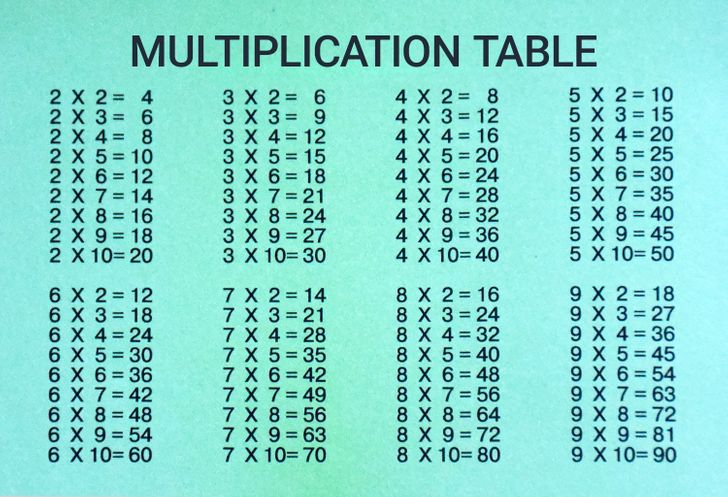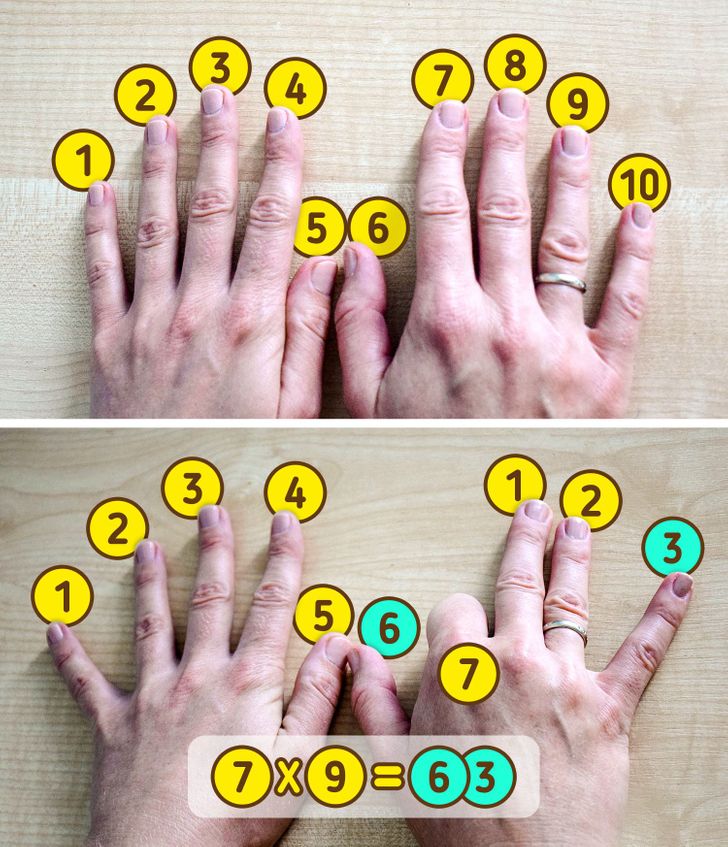How to Learn Multiplication Tables With a Child
Rote learning of the multiplication table can make a child tired, stressed, and uninterested in mathematics. Besides, parents will be as stressed as their children while they are trying to learn this.
5-Minute Crafts would like to show you how to make the learning of the multiplication table easy and fast.
This is how you don’t have to learn the multiplication table.
Rote memorization of 72 examples and correct answers is the most time-consuming way to learn the multiplication table. This method can be really boring for a junior student, but the most important thing is that it doesn’t help the child really understand multiplication.
How to learn the multiplication table easily
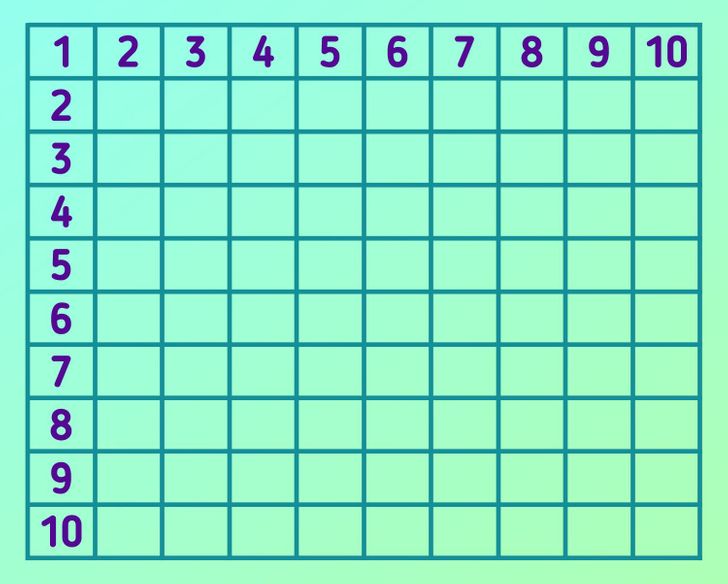
- Use the Pythagorean table. It is a table where columns and rows are titled by multipliers, and the cells contain the product of their multiplication. In this table, the number of examples that need to be learned will be reduced by half — from 72 to 36.
- Just print out a blank Pythagorean table (you can use the table above) and copy it several times. This way, you and your child will be able to fill in the cells, highlight individual cells with color, and outline and underline numbers.
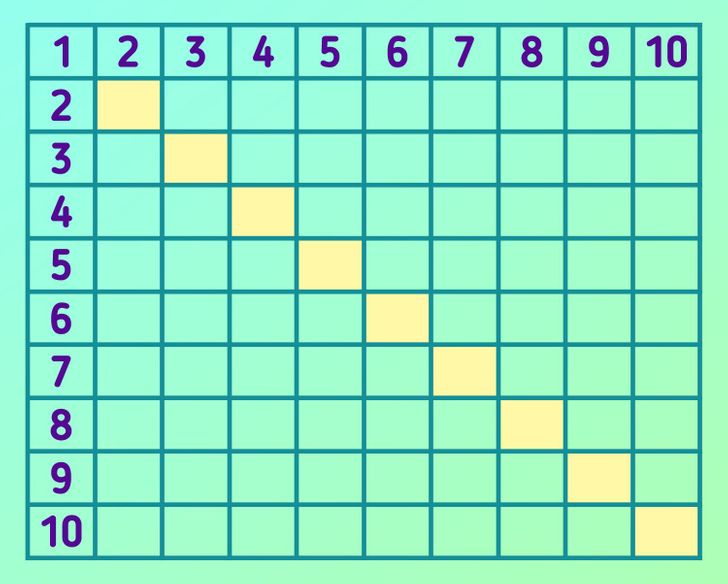
-
Tell your child that each cell of the table should be filled in with the product of multiplication of the 2 numbers that are at the beginning of the rows and the columns.
-
Highlight the central diagonal of the table, where multiplying numbers are the same, with any color.
-
Tell your child that they don’t need to learn the numbers above the central diagonal. In simple terms, changing the order of the multipliers doesn’t change the product. For example, 7×4 = 28 is the same as 4×7 = 28. It’s the same with all other numbers. This means that your child will have to memorize only 36 examples, not 72.
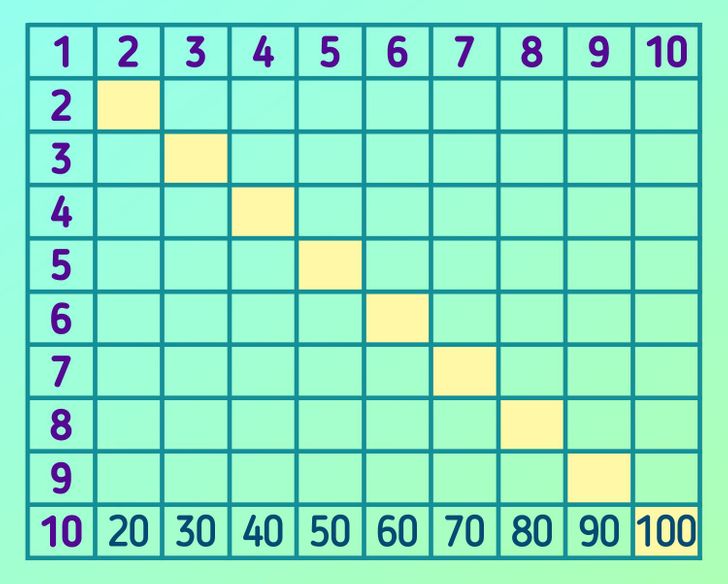
Tell your child about the simplest examples of multiplication:
-
0 is the simplest number to be multiplied by because the product will be always 0.
-
There is no issue with 1 either. Any number multiplied by 1 stays the same.
-
As for 10, all you have to do is add 0 to the multiplier. So go ahead and fill in the cells of the lower row with your child.
-
Tell your child about a trick that makes it easier to remember multiplying by 9. Ask them to put their hands in front of them and number the fingers from 1 to 10 from left to right: the little finger of the left hand will be 1, the ring finger will be 2, the middle finger will be 3, and so on. If you want to multiply 9 by 7, for example, bend the 7th finger. You’ll see 6 fingers to the left of the bent finger and 3 to the right. That is 63. This is exactly how much you’ll get if you multiply 9 by 7.
-
If you want to multiply 9 by 3, bend your 3rd finger. You will have 2 fingers to the left of it, and 7 to the right. The correct answer is 9×3 = 27.
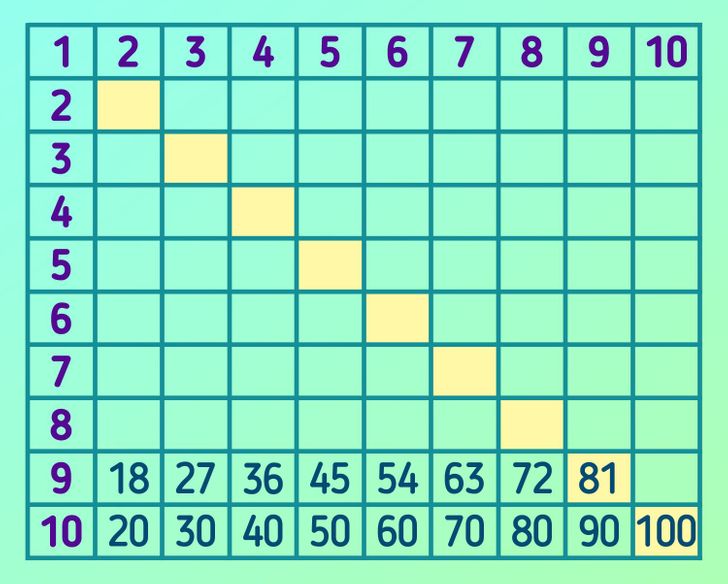
-
Try this hand trick together with your child and fill in the row starting with 9 sequentially multiplying 9 by 2, 3, 4, and so on.
-
You can also draw your child’s attention to the fact that the sum of 2 numbers in the product will always be 9. For example, 9×2 = 18 (1 + 8 = 9) or 6×9 = 54 (5 + 4 = 9).
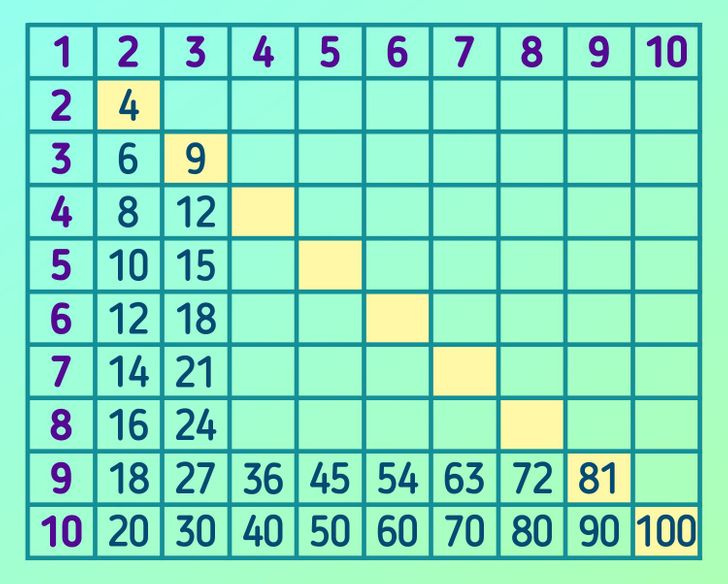
-
Next, fill in the column of the table that goes down from number 2, with your child. Explain that multiplying by 2 is like adding a number to itself. For example, 3 + 3 = 6 and 3×2 = 6. Draw your child’s attention to the fact that it’s really easy to remember the multiplication of 5 by 2: we have 2 hands, each with 5 fingers, and in total we have 10 fingers on both hands.
-
Fill in the column of numbers that goes down from number 3, starting from the colored cell. Here we multiply by 3. Explain to your child that some numbers just have to be memorized.
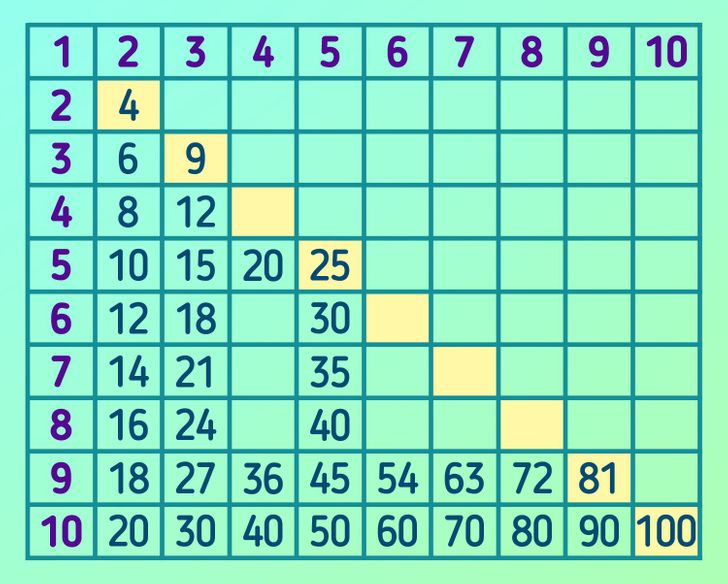
-
Next, explain to your child that it’s easy to memorize multiplication by 5. The child has 10 fingers on 2 hands, 15 fingers on their hands and one foot (multiplication by 3), 20 fingers on both hands and both feet. If mom adds her hand to their hands and feet, it will be 25. And so on.
-
Direct the child’s attention to the following pattern: when multiplied by 5, the product always ends in either a 5 or a 0.
-
Fill in the entire lower part of the Pythagorean table (below the highlighted diagonal), and tell your child that they won’t have to memorize the upper part of the table, because changing the order of the multipliers doesn’t change the product.
General principles of learning
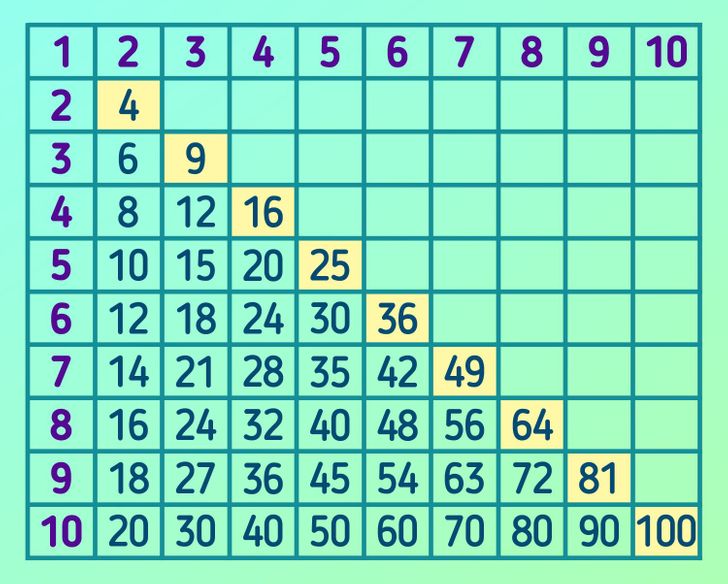
-
Explain to your child, that some examples just have to be memorized.
-
Don’t try to learn the entire multiplication table by heart at once. You can dedicate a couple of days to each number. There is no need to exhaust your junior student with a large amount of information.
-
Move from the simple to the complex. Begin with multiplication by 1, 0, 10, and 2. Then move on to multiplication by 5, 3, and 9, and so on.
-
Show your child simple real-life examples of how multiplication can be useful in life, like a family has 6 members. Each member should receive 2 pies for dinner. Ask your child how many pies should be baked for dinner.
-
Don’t forget that practice makes perfect. Repeat the multiplication table with your child regularly asking them to give answers to the examples both in the right order and randomly.
-
Print out the blank table and ask your child to fill it in without looking into their textbooks.
-
Don’t forget to compliment your child on their success in learning the table. It will motivate them to strive for further achievements.
